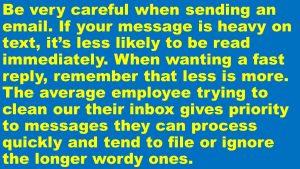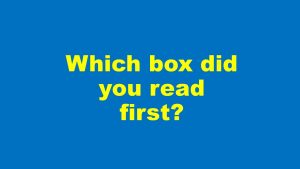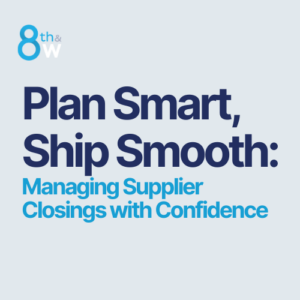(Editor’s note: Our advisory team has worked for and with Walmart’s buyers. We can bridge the gap and make your relationship with Walmart smooth. Click here to schedule a free consultation.)
A few years ago, I was working in an office that employed 25 people. I fired up my laptop one morning to find one of my co-workers had sent an email to the entire team. In about seven paragraphs, he explained a problem he was having and asked us to respond with our thoughts on the cause and solution.
I never reply all.
I walked over to his desk and we talked through the issue. After I gave my input, he thanked me and I stopped for a coffee on the way to my desk. By the time I got back to my inbox, he had taken the liberty to reply all letting everyone know he and I had spoken. He practically documented the entire conversation in email form and sent it out.
See any issues with this? Your Walmart Buyer does.
Your Email Is One of Thousands
In working with new suppliers to Walmart, our advisory team has responded to many panicked comments regarding email. These are actual statements we’ve heard this year:
 “I emailed the buyer this morning and haven’t heard back. Should I send her another one?”
“I emailed the buyer this morning and haven’t heard back. Should I send her another one?”
“The buyer hasn’t gotten back to me yet. Should I email them that I’m on vacation next week so they know to hurry?”
“I tried to send my buyer a PowerPoint, but I got a message saying his inbox is full. Can you try to send it?”
It’s exciting to work with Walmart and can be frustrating when you’re feeling ignored. At 8th & Walton, we try to give our clients a realistic peek behind the blue curtain and assure them it’s not personal or rude. The Walmart buyer is slammed with emails each day from multiple suppliers, upper-management, peers, direct reports, stores, field operators, and third parties to name a few.
To get your message heard, and in turn get your work accomplished, keep reading before you hit that next send button. We’ve collected feedback from buyers and suppliers alike that can help your message stand out in the stormy sea of electronic communication.
Is this Appropriate for Email?
All electronic communication (email, text, direct message, etc.) is comfortable. Why? You’re not there when I’m writing it and I’m not there when you’re reading it. However, comfort is sometimes the enemy of effectiveness.
While it’s easier to send an email and hope for the best, the general rule is anything over five sentences needs to be a conversation. Written communications don’t pick up tone, which can easily be mistaken for rudeness. Verbal trumps written every time.
Making Your Email Rise to the Top
You’ve decided you need to send your buyer an email and you realize it will be one of hundreds in their inbox. If they’re just skimming to get caught up in-between meetings, you only have a few seconds to grab their attention. Make yours stand out with these hints:
- Structure the Subject Line – Keep it short, put the important words first, and indicate if it needs a reply.
Ex: Product Arriving Week 5; Please Confirm Delivery
- Bold Key Facts in the Body – The buyer may briefly view your email in the reading pane. Grab their attention by highlighting a few points you need them to catch at first glance.
Ex: “Elizabeth, I just heard from our overseas distributor. Our latest shipment of product was destroyed in a fire. The next shipment will arrive week 35. I’ll let you know if we can speed up the shipment, but if there are any questions, please call me at your next convenience. Thank you.”
- Keep the Body Short – Isn’t more information better? Look at these boxes, and be honest:


The human eye is drawn to simplicity. Given a chance to read three sentences or three paragraphs, the recipient always chooses the shorter communication. Either way, they’re eliminating one message from their inbox, so the concise communication will take less time and has the better chance of soliciting a response.
- Ask Permission before Attaching – PowerPoints, videos, large Excel workbooks. . .any attachment has the potential to eat up bandwidth in your recipient’s inbox. Even if they receive your email attachment, it may block out the next message from their boss! Always ask before sending the attachment. Your buyer will appreciate you more when it comes through.
A Little Patience Goes a Long Way
Look closely at your Facebook feed. I’ll bet you have some friends that post twice a week and some friends that post twice an hour! People constantly sending messages usually have the least amount of substance behind their content. It’s the same way all of us (including your Walmart buyer) look at our inbox.
Your Walmart buyer is trying to catch up on email between conference calls, planning meetings, travel, and appointments with other suppliers. When they get to your email, if they find it’s a message just checking to see if they received your last email. . .DELETE!
 When you have a good relationship with your buyer, communication will be the least of your worries. If it didn’t bounce back to you, they received your message and will respond in time. A request for an immediate response that will impact the business should be included in the subject line.
When you have a good relationship with your buyer, communication will be the least of your worries. If it didn’t bounce back to you, they received your message and will respond in time. A request for an immediate response that will impact the business should be included in the subject line.
Need more help on building your relationship with Walmart? Whether you’re a new supplier or a seasoned pro, our team is ready to work alongside you! Click here to learn more and schedule a free consultation.
Want to learn more about using email effectively in the workplace? Click here for our podcast on Email Etiquette and forward it to a co-worker who needs it!



